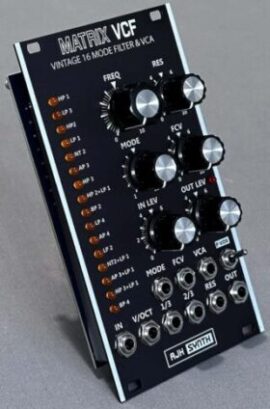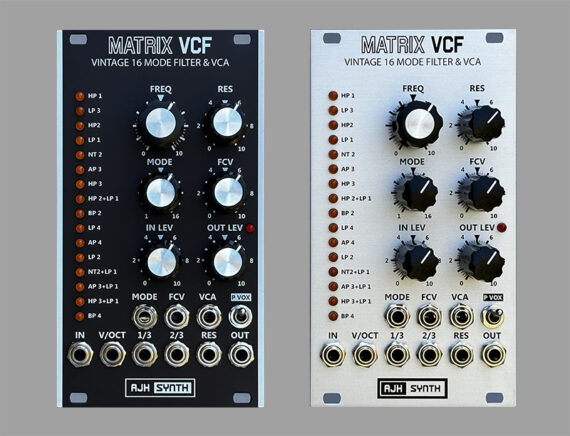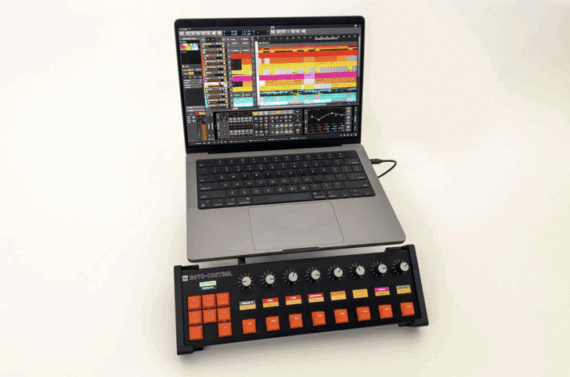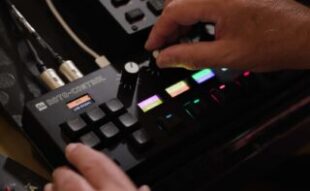
AJH Synth has introduced the Matrix VCF, a new Eurorack module that features sixteen different filter types and two different resonance options on each, for a total of 32 assorted resonant filters.
They say that the Matrix VCF may be the most versatile VCF ever, offering an unparalleled degree of sonic flexibility in a single 14 HP analog Eurorack module.
Each filter and filter type selection can be controlled manually through CV control, and an LED matrix provides visual feedback on current filter selection. The module also includes an integrated VCA, with dedicated input and output controls, a peak level LED and CV control of resonance.
“After two years of development we have finally released what we consider to be the most versatile Eurorack VCF & VCA ever,” said Allan Hall, founder of AJH Synth. “As with our many other modules, we used the very best vintage analogue circuitry as the starting point for the design. Then we chose to emulate the filter from the rare and highly desirable Oberheim Matrix 12 synthesizer, while vastly expanding both the sonic pallet and feature set.”
The core circuitry of the Matrix VCF is based on the rare Oberheim Matrix 12 synthesizer. The Oberheim Matrix 12 VCF originally offered a total of 15 filter types, but the AJH Matrix VCF expands this to 16, with the addition of AP4: a full four pole all pass phaser mode.
A switch on the front panel imparts a highly resonant distortion circuitry, by the filter from the Soviet Polivoks synthesizer — which has been updated and improved with vintage analogue components. Best of all, this Polivoks-inspired distortion character can be applied to all filter types on the Matrix VCF, completely altering the sonic character for a ‘Jekyll and Hyde’ effect. The resulting waveforms are harmonically rich and wide-ranging in scope.
Finally, since a VCA is hard-wired to the output stage, users can simply patch in envelope or an LFO to the VCA input and connect a VCO to the audio input for a complete synth voice (with a choice from 32 different filters) using only three modules.
The official user guide:
The Matrix VCF includes the following filter modes, each of which can be altered via the P-Vox switch for a total of 32 different filtering options.
- Four Pole Band Pass
- Three Pole High Pass combined with One Pole Low Pass
- Three Pole All Pass combined with One Pole Low Pass
- Two Pole Notch combined with One Pole Low Pass
- Two Pole Low Pass
- Four Pole All Pass (Phaser)
- Four Pole Low Pass
- Two Pole Band Pass
- Two Pole High Pass combined with One Pole Low Pass
- Three Pole High Pass
- Three Pole All Pass
- Two Pole Notch
- One Pole Low Pass
- Two Pole High Pass
- Three Pole Low Pass
- One Pole High Pass

The AJH Synth Matrix VCF is available now for £310.







